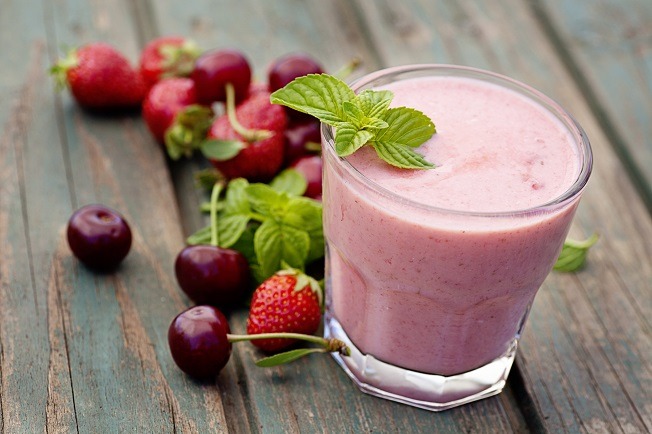You may think building a healthy smoothie is easy. Grab a blender and throw together a bunch of fruit, added sweeteners, and milk or juice, and call it good. But think again. When done right, smoothies can indeed be very healthy. Plus, they’re a convenient and easy way to pack in essential fiber, vitamins, minerals, and antioxidants all in a drinkable form.
However, when done wrong, drinking what you perceive as ‘healthy,’ might backfire. When packing smoothies with a bevy of ingredients, a super healthy smoothie easily becomes a disastrous overload pushing in excess of 500 calories plus and a surplus of sugars sabotaging attempts at both weight loss or keeping blood sugar under control.
Could you be making these same ‘smoothie mistakes’ and not know it? If so, you’re not alone. Smoothies are a commonly made concoction in many households and often used as a meal replacement. But to avoid bungling a smoothie, read on to discover the right way to build a delicious, nutritious, and filling smoothie keeping everything in balance.
Common smoothie mistakes to avoid
To understand the art of healthy smoothie-making, it’s important to know mistakes to avoid. See if you might be guilty of any of the following:
- Putting in too much fruit: Many of us believe ‘more is better by adding an abundance of fruit to a smoothie recipe. Fruits are a mainstay of smoothies offering a variety of nutrients your body needs. But remember, moderation is key. Too much of a good thing will disrupt the balance between calories and carbs. The rule of thumb is to use about one cup of no more than one to two fruits per smoothie.
- Adding in too many sweeteners: A sugar is sugar, no matter what form it’s in. If you like sweetening up your smoothie by adding in honey or maple syrup or coconut sugar as examples, a heavy hand will up the calorie and carb ante…a lot. Whatever fruit you’re using should be ‘sweet enough’ without having to rely on added sugars.
- Drinking a smoothie with a meal: Most smoothies are consumed early morning for breakfast. A high protein, fruit and veggie-packed smoothie can be a nutritious way to begin your day and likely has sufficient calories to meet your needs for that meal. But if you’re also having that smoothie along with a bowl of cereal or oatmeal or a plate of eggs, bacon, and toast, either cut out the smoothie or significantly lighten it up to still enjoy alongside your other foods.
- Going overboard with nutrient boosters: Some smoothie zealots like to ‘beef up’ the nutritional value by adding in extras like protein powders, peanut or almond butter, or chia seeds. While these can be used, if amounts are unchecked, calories add up quickly. Consider that just one tablespoon of peanut or almond butter contains 100 calories. Again, moderation rules.
Enjoying smoothies healthfully
Now that you know what not to do, discover what you should do. When done right, smoothies can be a healthy beverage to savor and enjoy. The goal is to keep calories under control (ideally under 300 calories) while feeding your body a nourishing drink sustaining good health. Here are five smoothie staples your smoothie should contain:
- Fruit: This is your base ingredient and source of fiber, vitamin C, and antioxidants. For each serving you’re making, add in ¾ to 1 cup of fresh or frozen fruit – if you use a large banana that counts as two servings. Some of the best fruits to use are berries, mangos, peaches, pineapple, and cantaloupe. Placing fruit in single-serving baggies to freeze beforehand will replace the need for ice.
- Veggies: Vegetables add few calories but lots of vitamins and minerals – perfect for smoothies. Popular veggies added to smoothies are spinach and kale, good for folate, iron, and phytochemicals like carotenoids and flavonoids. But if feeling bold, consider adding in nutrient gems loaded with anti-inflammatory properties such as red beets, carrots, zucchini, cucumber, or cauliflower.
- Protein: A good protein source is a must for smoothies. Protein stabilizes blood sugar, creates satiety, and provides long-lasting energy. Great options include Greek yogurt, nuts and nut butters, chia, hemp, or ground flax seeds, cottage cheese, and whey or pea protein powder.
- Liquids: When choosing a liquid for a smoothie, think nutritious. Unflavored cow’s milk or non-dairy beverages like soymilk or almond milk are perfect for providing calcium and vitamin D. For adding in hydration, choose water or ice cubes. If choosing juice, use sparingly (no more than ½ cup) to avoid too many calories and sugar.
- Spices, extracts & herbs: To bump up the flavor without the calories, you can’t go wrong with spices, extracts, or herbs. Even better, are their health benefits and how they can take your smoothie from good to great. Consider these add-ins for supercharging and transforming your smoothie’s flavor and nutritional profile:
- Almond or vanilla or peppermint extract – all calorie-free and add complex flavors
- Nutmeg – rich in antioxidants
- Grated fresh ginger – aids digestion and eases a queasy stomach
- Powdered peanut butter – contains heart-healthy monounsaturated fat
- Cinnamon – may lower blood sugar
- Cayenne – contains capsaicin providing pain relief
- Cocoa powder – may improve cholesterol levels
- Cloves – a rich source of manganese
- Turmeric – powerful anti-inflammatory and antioxidant properties
- Basil – contains compounds reducing anxiety
- Mint – may mask bad breath
- Parsley – may support bone health
- Cilantro – may improve sleep


